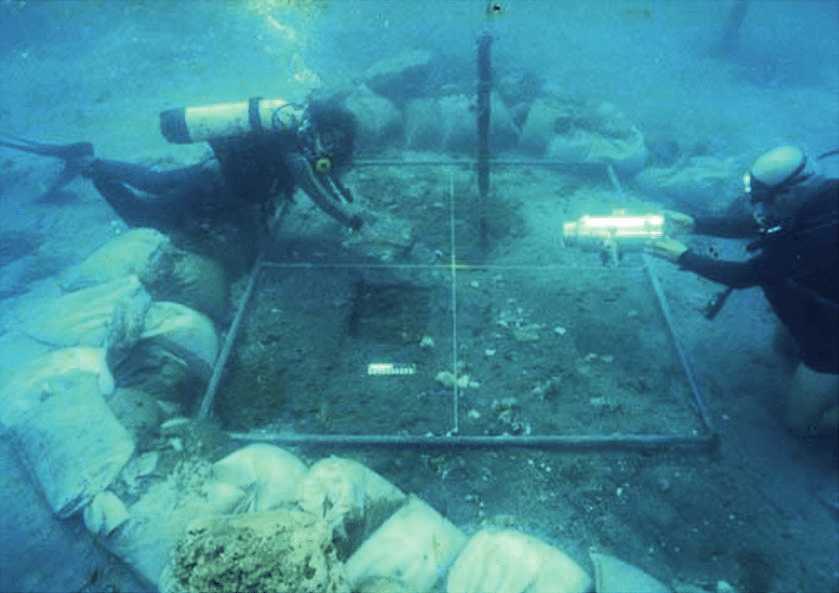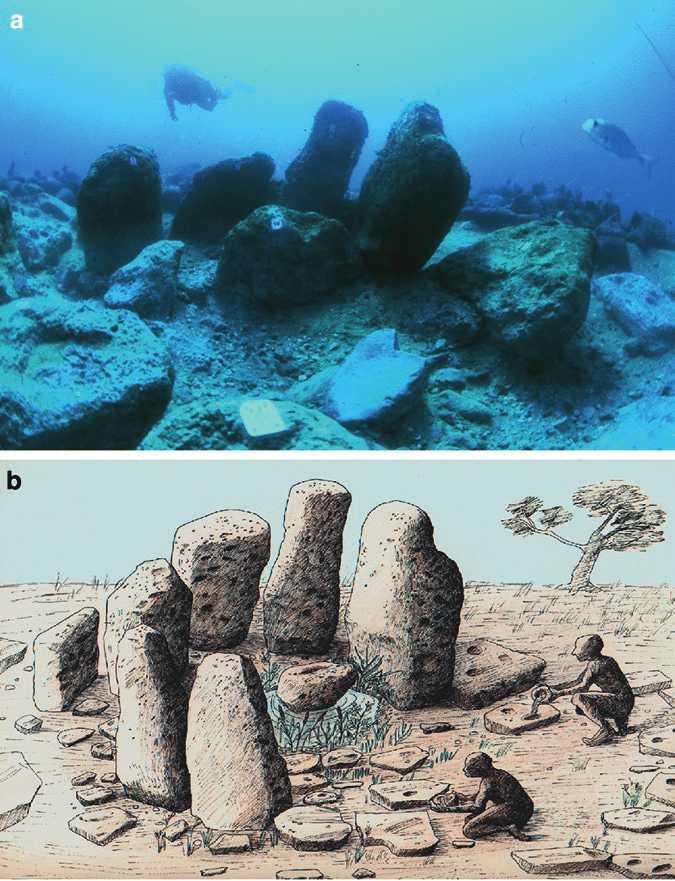- @Skywizard thanks for sharing, good to see you back active again

9000-Year-Old Submerged Neolithic Village Discovered off Coast of Israel With 65 Human Skeletons
Atlit Yam, the ancient underwater site, can be found near Haifa in Israel, not far from the coast of the village of Atlit in the Mediterranean Sea. This prehistoric settlement dates back to the 7th millennium BC (
around 9,000 years ago) and is considered to be one of the largest and oldest ever found. The site is so well-preserved that even today, you can see the mysterious stone circle and the human skeletons lying undisturbed in their graves.
Atlit Yam occupies an area of 40,000 square meters and is located 8 to 12 meters below sea level. Marine archaeologist Ehud Galili first discovered it in 1984 and since then,
underwater excavations have revealed a wealth of information about the daily life of the ancient inhabitants. Houses, wells, walls, ritual installations, paved areas, a megalithic structure, objects made of stone, bone, wood, and flint, and dozens of human remains have all been discovered at the site. (
Source)
One of the fascinating aspects of the settlement is the megaliths located at its center. These seven stones, weighing up to 600 kilograms, are arranged in a semicircle and have cup marks carved into them. It is believed that they may have been used for a water ritual, as they were once arranged around a freshwater spring. Another installation consists of three oval stones with grooves forming schematic anthropomorphic figures, further adding to the mystery of the site and its ancient inhabitants.
Archaeologists and historians have been fond of Atlit Yam for many years. One of the most interesting things about it is the stone-built well dug down 5.5 meters. The well held many secrets and showed what life was like for the people who used to live there.

Atlit-Yam structure 10a (concentration of fish bones and wheat grains) during the course of excavation. Photo by Ehud Galili. Credit:
ResearchGate At the bottom of the well, researchers found an array of artifacts and remains that offered valuable insights into the lifestyle of the prehistoric inhabitants. The well was filled with sediment, containing bones from wild and domesticated animals, flint, stone, wood, and other artifacts.
This suggests that, towards the end of its use, the well was no longer used to provide water; instead, it was used as a disposal pit. The shift in its function was likely due to the water salinization caused by a rise in sea level.
The wells found at Atlit Yam were constructed at the end of the 9th millennium BC. These wells played a crucial role for the area’s residents as they were the water source to maintain a permanent settlement. The villagers dug a 10.5-meter-deep well through layers of clay and soft sandstone, lined it with stone courses, and capped it with a tumulus-like circular construction.
The archaeological material found at the site provides clues into the diet and lifestyle of the prehistoric inhabitants. For instance, the remains of more than 100 species of plants were found, including wild and domesticated animals such as sheep, goats, pigs, dogs, and cattle. This suggests that the area’s residents practiced hunting and animal husbandry. Additionally, more than 6,000 fish bones were also discovered, which indicates that fishing played a significant role in their society.

The megalithic structure at Atlit-Yam shows standing stones arranged in a circle. (a) The structure after excavation. Photo by Itamar Grinberg; (b) Artist’s reconstruction by the Israel Antiquities Authority. Credit: ResearchGate The site at Atlit Yam provides evidence of the earliest known agro-pastoral-marine subsistence system on the Levantine coast. The artifacts and remains found at the site offer a unique glimpse into the daily lives of the people who once lived in the area, making Atlit Yam a valuable place for the study of human history and development. These inhabitants were among the earliest to convert from hunter-gatherers to farmers, and the town is one of the earliest with signs of domesticated cattle.
cheers,
John 🦜🦋🌳
...peace









 Reply With Quote
Reply With Quote








Bookmarks